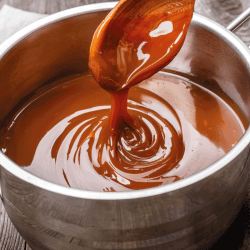Butterscotch sauce is a delicious and versatile addition to many different desserts and dishes. But if you need to store it, you may wonder if it can go in the freezer. Let's take a look to see if this is a viable option for preserving your sweet treat.
Butterscotch sauce can be frozen for later use. However, since it contains heavy cream, it will expand when frozen. With that in mind, refrain from using glass jars when freezing the sauce and opt for plastic containers or freezer bags instead.
Knowing how to preserve your butterscotch sauce is essential for any kitchen. In this article, we will take a closer look at the proper way to store the sauce for later consumption. In addition, we will answer other frequently asked questions about butterscotch, so read on!
Can You Put Butterscotch Sauce In The Freezer?
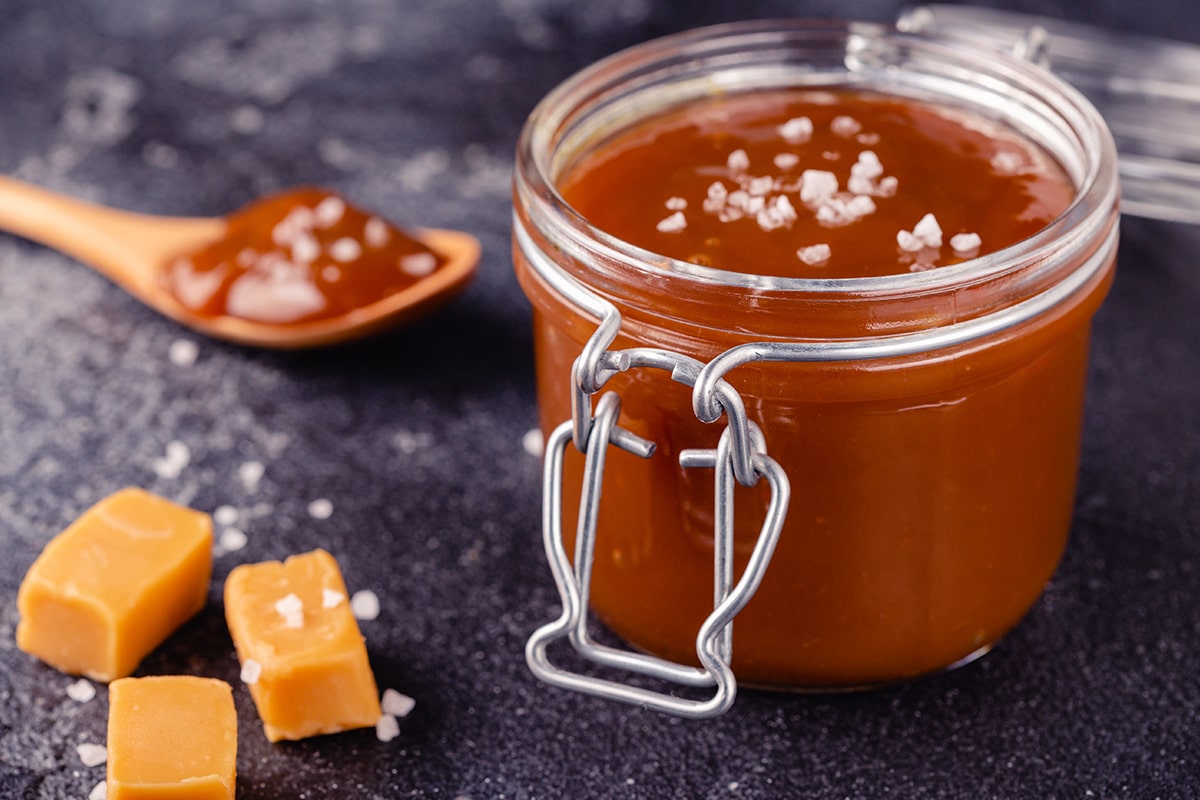
Whether homemade or bought from a store, butterscotch sauce is a delightful treat. It can be added to various desserts and dishes, but if you have some leftovers, you may want to store them.
Fortunately, butterscotch sauce can be safely frozen for up to three months. However, since it contains heavy cream, make sure to use plastic containers or freezer bags instead of glass jars so that the sauce does not expand and break when frozen. Additionally, make sure to leave a little room in the container for expansion.
Once you have frozen the sauce, take it out of the freezer and let it thaw in the refrigerator before using it. Once thawed, stir or shake the butterscotch sauce to combine once again, and enjoy!
If your butterscotch sauce is frozen for more than three months, it's best to discard it and start with a new batch. Over time, the ingredients in the sauce will lose their flavor and texture, so it's best to start fresh for optimal taste.
If you will be using your butterscotch sooner than that, you can also refrigerate it. Place it in a sealed container or jar and store it for up to two weeks to a month.
When you want to use the sauce, take it out of the refrigerator and let it come to room temperature before serving. Be sure to give it a good stir or shake to combine the sauce again before using it. If the sauce has become too thick, you can add a few drops of cream or water to thin it out until it reaches your desired consistency.
If your butterscotch is showing any signs of spoilage such as discoloration, a bad odor, or a slimy texture, it may be best to discard it instead of consuming it.
How Do You Make Butterscotch Sauce?
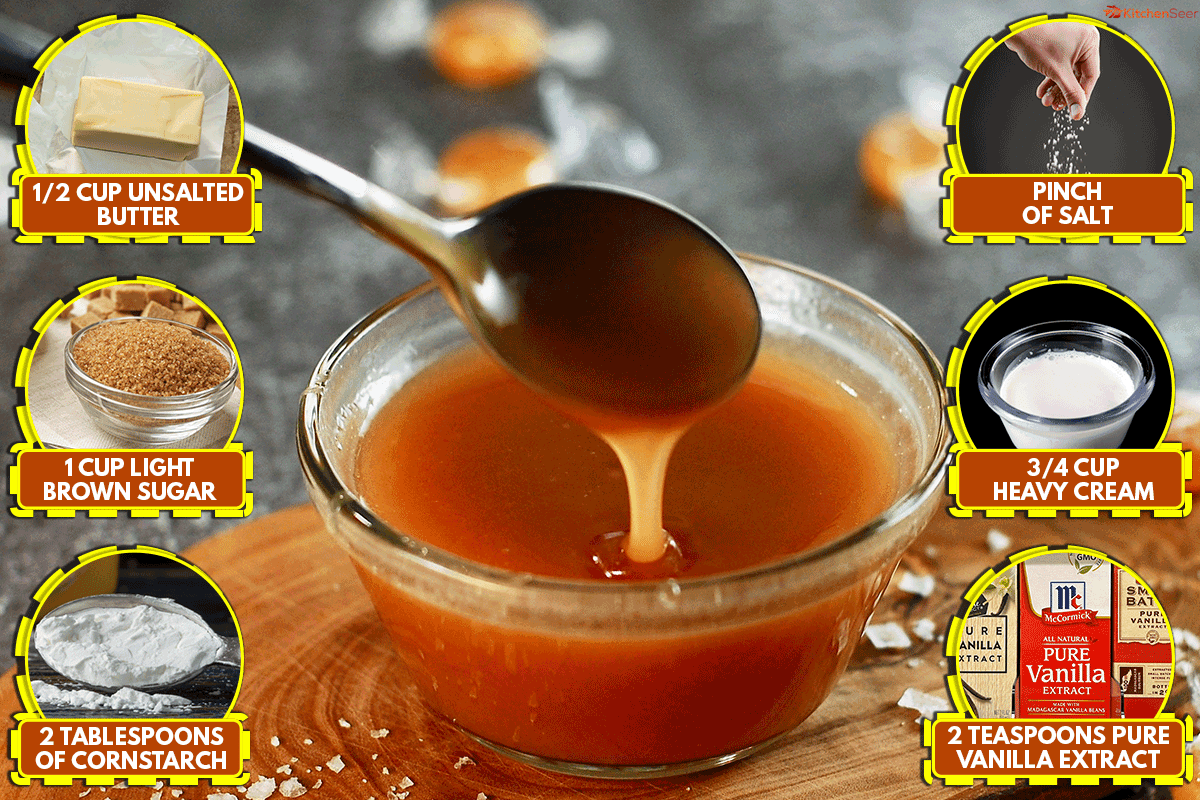
If you want to make your own butterscotch sauce at home, it's easy to do. You only need a few simple ingredients and about 15 minutes of your time.
Here are the ingredients you will need:
- 1/2 cup of unsalted butter
- 1 cup of light brown sugar
- 2 tablespoons of cornstarch
- Pinch of salt
- 3/4 cup heavy cream
- 2 teaspoons pure vanilla extract
Instructions:
- In a medium saucepan over medium heat, melt the butter.
- Add in the brown sugar and stir until it is dissolved and bubbling up.
- Mix the cornstarch and salt in a small bowl, then slowly add to the mixture while stirring constantly.
- Gradually pour in heavy cream, stirring continuously until there are no lumps.
- Reduce the heat to low and let the sauce simmer for 10 minutes while stirring occasionally.
- Remove from heat and stir in the vanilla extract.
- Let cool before using or storing as desired!
This recipe will make around 2 cups of butterscotch sauce, so feel free to double or halve the recipe as needed!
Now that you know how to store and make butterscotch sauce, it's time to enjoy it! Try adding it to ice cream sundaes, pies, pancakes, waffles, and more. You can even use it as a dip for fruits or drizzle it over popcorn. Enjoy!
Can Butterscotch Sauce Be Reheated?
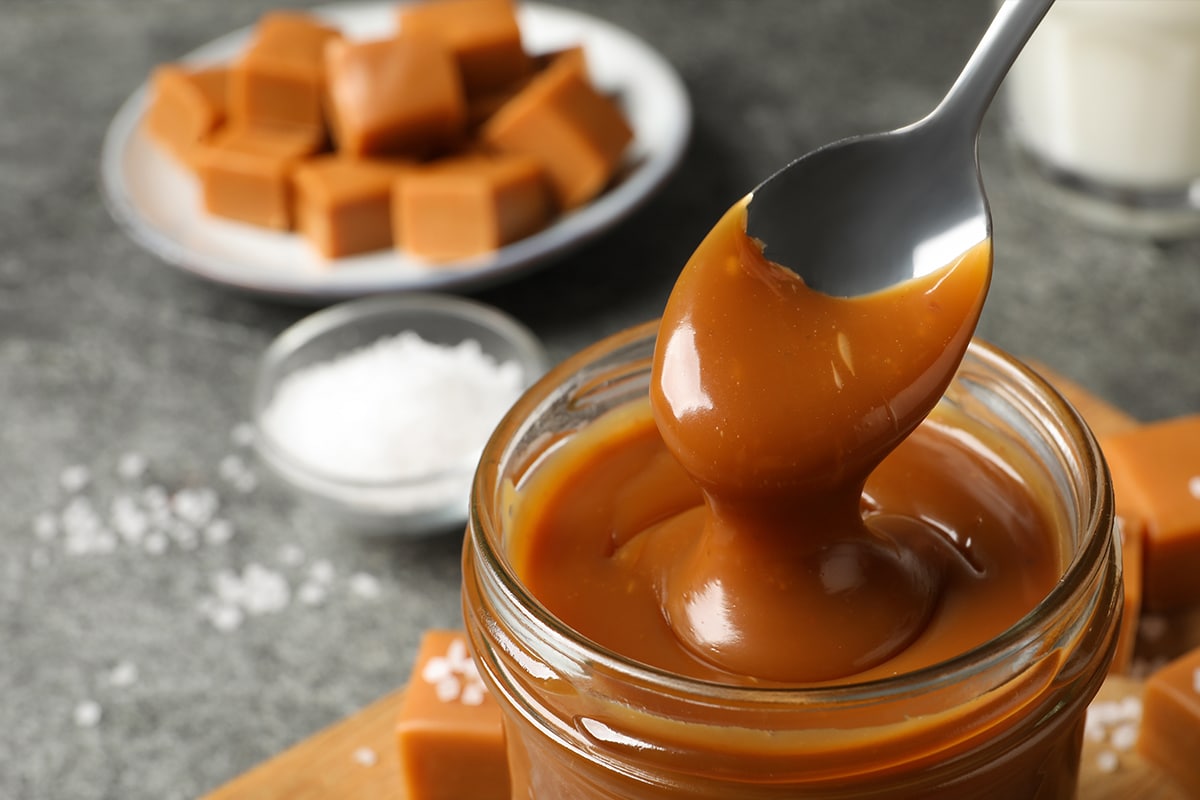
Yes, you can reheat butterscotch sauce without any issues.
To heat up the sauce, simply place it in a small pot on the stove over low to medium heat. Stir continuously and add a splash of water or cream if needed to thin out the sauce as it warms up.
Alternatively, you can also heat up the sauce in the microwave. Place it in a microwave-safe bowl and heat for about 15-20 seconds at a time, stirring between each interval until the sauce is warm.
Be sure not to boil or overcook the butterscotch sauce, as it can affect its taste and texture. Once reheated, stir or shake the sauce to combine again before serving.
What's The Difference Between Butterscotch Sauce And Caramel Sauce?
Butterscotch and caramel are similar desserts, but the two sauces have different flavor profiles. Caramel sauce is made with granulated sugar, while butterscotch sauce is made with brown sugar. The granulated sugar is melted when making caramel sauce until it turns into a golden-brown liquid.
Butterscotch typically has a more mellow, buttery flavor than caramel's sweet and creamy taste. Caramel sauce also tends to be thicker than butterscotch, as it does not contain cornstarch or cream.
Nevertheless, both sauces can be used to add a rich and decadent touch to desserts. You can also use them interchangeably in recipes depending on your preferences!
Why Is My Butterscotch Sauce Runny?
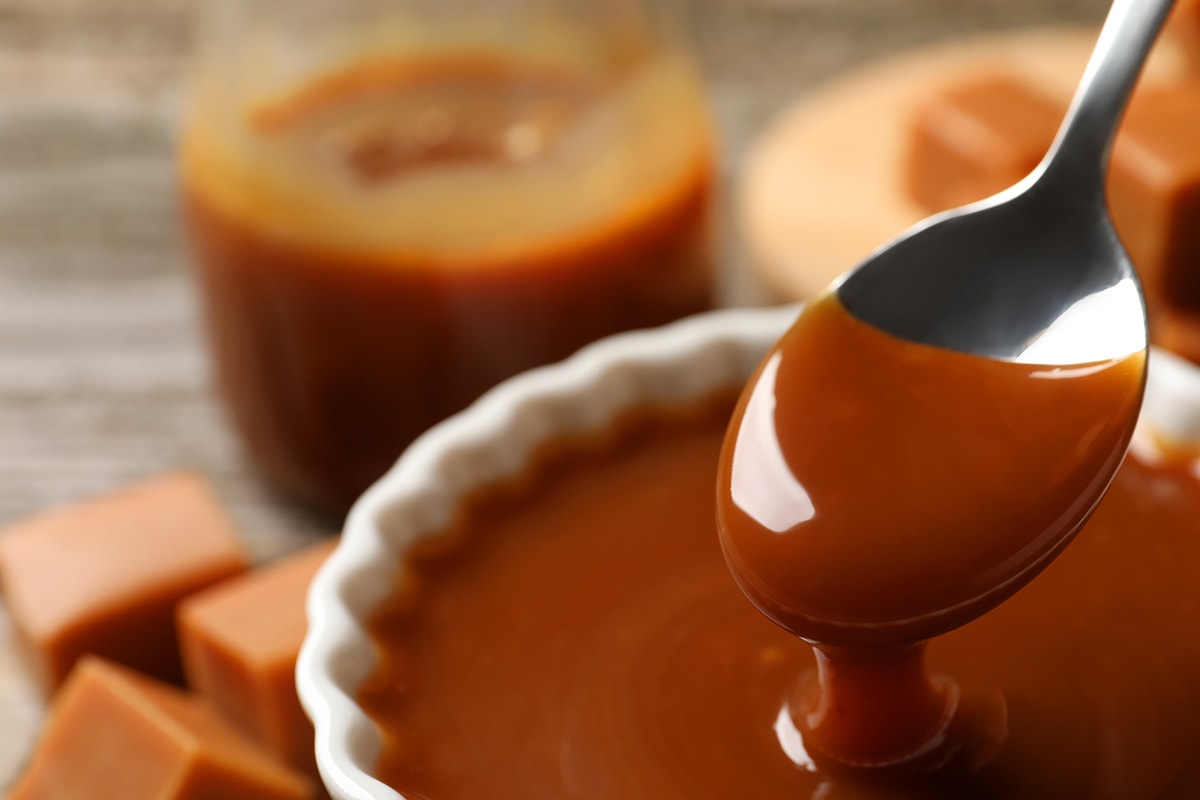
When making butterscotch sauce, it's important to keep an eye on the consistency while simmering. If you find that your sauce is too runny, there are several things that could be causing this.
First, ensure you are correctly measuring all the ingredients when preparing the sauce. Too much cream or sugar can make the sauce thinner than desired. Also, ensure you are not simmering the sauce too long, as this can cause it to thin out.
If your butterscotch sauce is still runny after addressing these issues, you may need to add a thickening agent such as cornstarch or arrowroot powder. Simply mix together a teaspoon of cornstarch with a tablespoon of cold water and slowly add it to the sauce while stirring continuously.
The issue could be related to the type of ingredients. For example, low-fat cream or high-moisture butter can also cause a runny consistency. In this case, switch to heavy cream or full-fat butter to help thicken the sauce.
Finally, make sure you are not overcooking the butterscotch sauce. If it's in the heat for too long, it will break down and become thin and watery. Try reducing the heat and simmering for a shorter time to see if this helps thicken the sauce.
By following these tips, you should be able to get your butterscotch sauce back to its desired consistency in no time! Enjoy!
What Can You Do With Leftover Butterscotch Sauce?
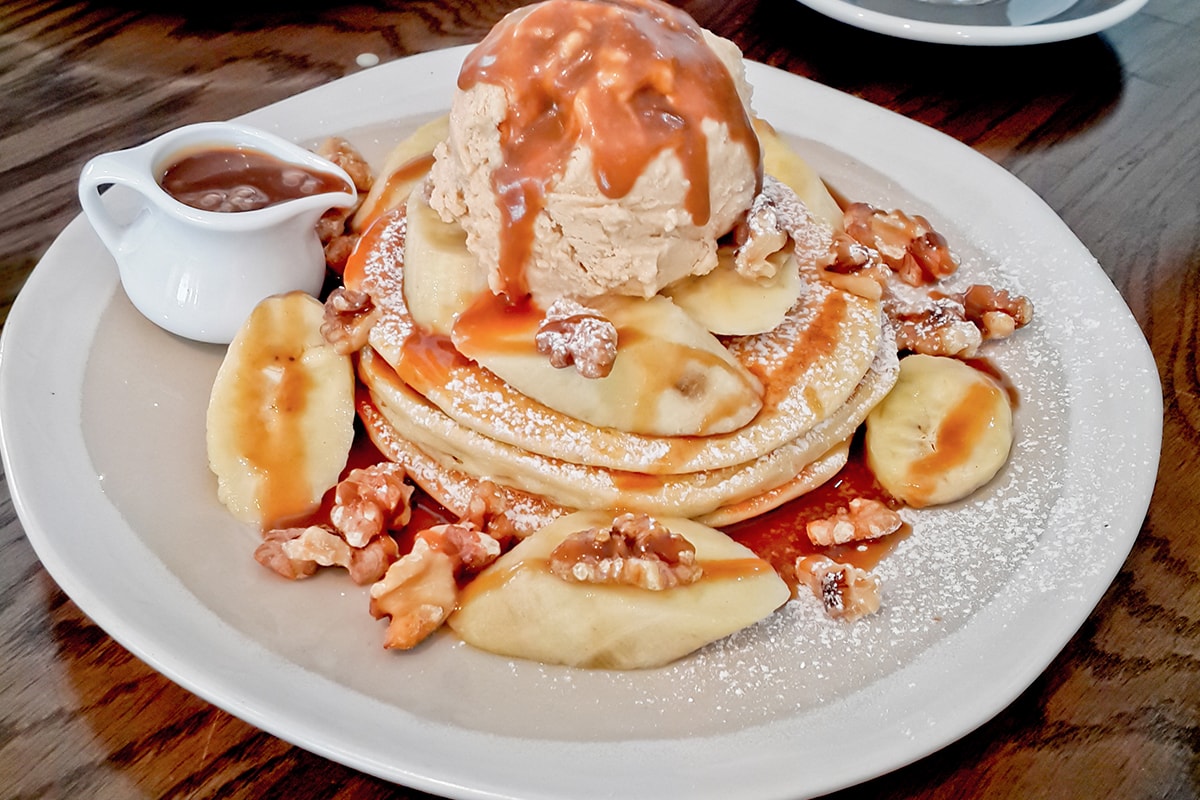
If you have any leftover butterscotch sauce, there are plenty of delicious ways to use it.
For starters, you can drizzle the sauce over ice cream or use it as a topping for pancakes and waffles. It also makes a great dip for fresh fruits like apples and bananas. You can even mix it into yogurt or overnight oats for an extra-special treat.
If you're feeling adventurous, why not try baking with it? Butterscotch sauce is the perfect addition to brownies and blondies. Or you can use it as a filling for cakes, cupcakes, and tarts. You can even drizzle it over popcorn for an extra-indulgent snack.
The possibilities with butterscotch sauce are endless, so don't let it go to waste!
Is Butterscotch Sauce Healthy?
If you are looking for a healthy dessert sauce, then butterscotch isn't the best choice. The sauce is made with butter, cream, and brown sugar, which are all high in fat and calories.
That being said, there's no harm in indulging in a bit of butterscotch every now and then. Just make sure to practice moderation when doing so, as it can quickly become unhealthy if overconsumed.
You can also make your own butterscotch sauce using healthier alternatives such as almond or coconut milk, natural sweeteners like maple syrup and honey, and oil instead of butter. This will help significantly reduce the dish's fat and calorie content.
Overall, the butterscotch sauce isn't necessarily unhealthy if enjoyed in moderation. It is, however, a treat that should be enjoyed sparingly.
Final Thoughts
Overall, butterscotch sauce is perfectly fine to freeze and enjoy later. However, it will expire over time, so make sure to use it up before the expiration date. So don't wait too long to indulge in this delicious treat!
Made it to the end? Here are other articles you might find helpful:
Caramel Sauce Vs Syrup: What Are The Differences?
Does Aunt Jemima Syrup Go Bad? [Here’s What You Need To Know!]
How To Freeze Cheesecake [And How To Thaw It Too]


![Salted caramel pieces and sea salt. Golden Butterscotch toffee caramels, Does Butterscotch Have Dairy? [With Ways To Make It Vegan]](https://kitchenseer.com/wp-content/uploads/2022/12/Salted-caramel-pieces-and-sea-salt.-Golden-Butterscotch-toffee-caramels-250x250.jpg)

![Homemade pie with whipped cream and caramel sauce. Close up, Why Is My Butterscotch Pie Runny [& Possible Fixes!]](https://kitchenseer.com/wp-content/uploads/2022/12/Homemade-pie-with-whipped-cream-and-caramel-sauce.-Close-up.-250x250.jpg)
